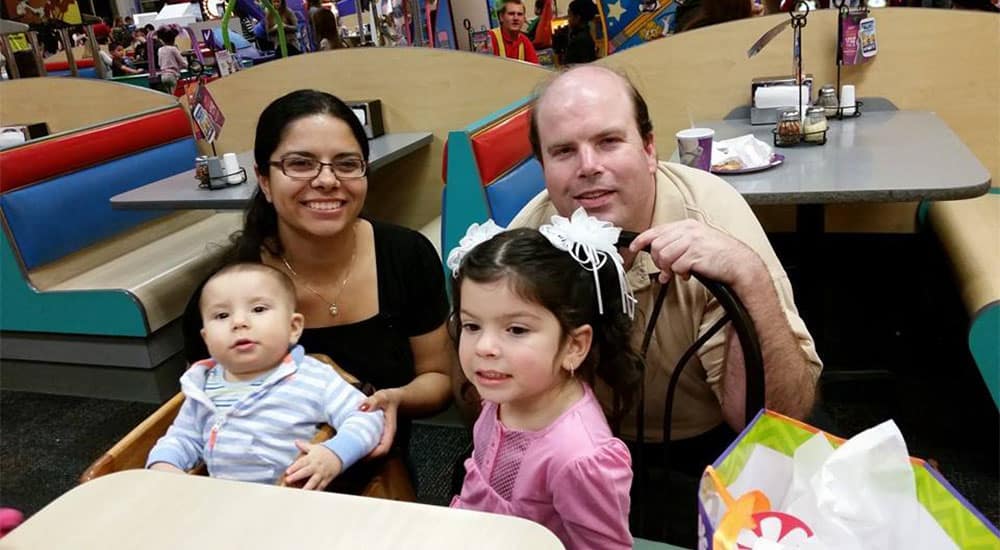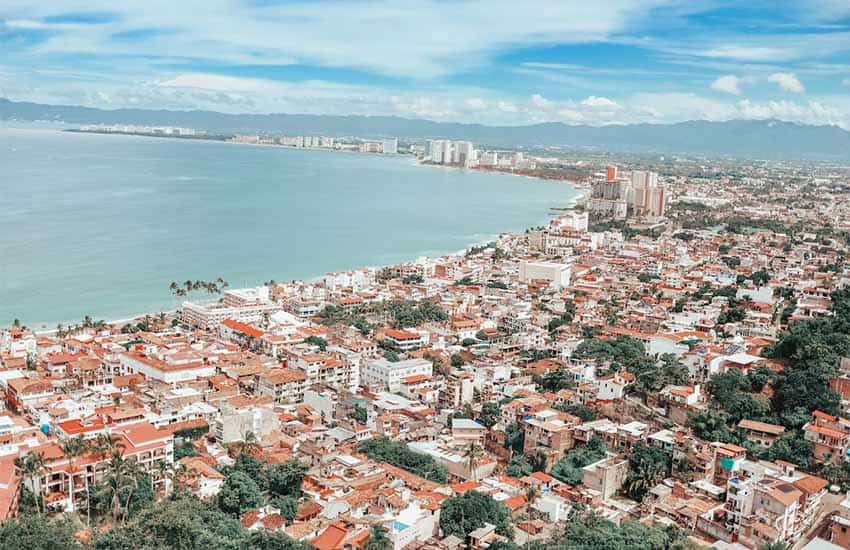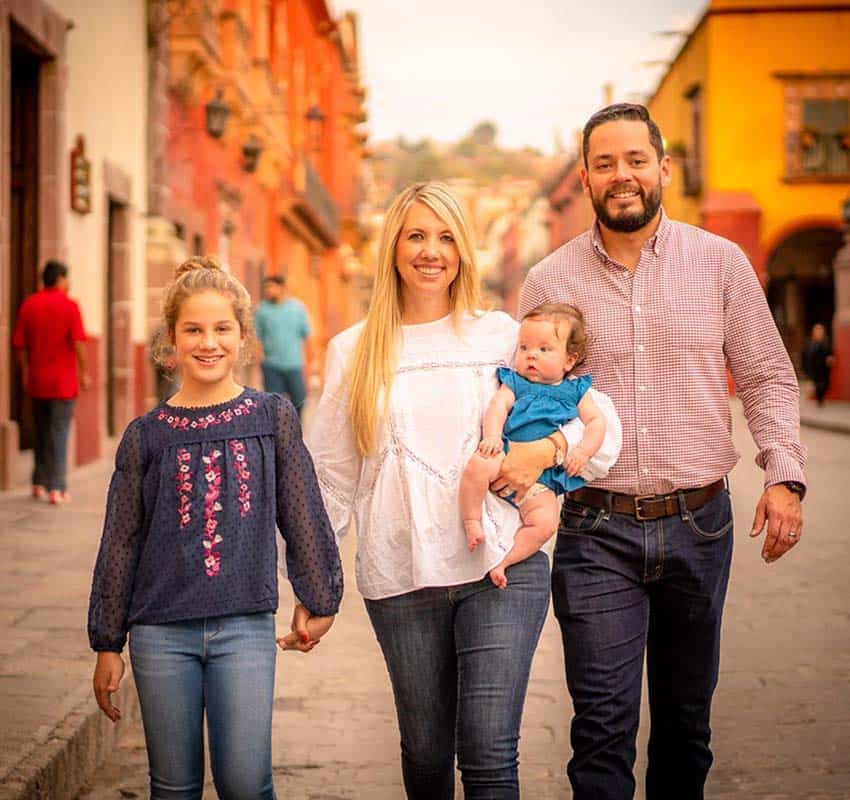Mexico has become an increasingly popular place to live for retirees and remote workers from around the world. According to the latest figures from the federal statistics agency INEGI (2020), more than 1.2 million foreigners live in Mexico — nearly 300,000 more than a decade ago. But did you know Mexico is also a hot relocation spot for families with school-aged children?
While Mexico doesn’t publish data on the family makeup of its foreign population, the number of extranjero families living here appears to be significant and growing: just look at the number of Facebook groups and blogs dedicated to families living in or immigrating to Mexico. Visit any school, plaza, café or mercado in an expat enclave, and you are bound to find parents and kids of various nationalities integrating everywhere into daily Mexican life.
“It’s the best move we could have ever made,” said Jason Hartman, who moved to Michoacán from Los Angeles. “Here I am less stressed. I don’t work 60-hour weeks just to get by.”
“The trend used to be that foreign families would come for just part of the year or a few months and then return to their home countries. In the past two to three years, we have seen more families stay here permanently,” said Erika Ramírez Gamero, director of the Costa Verde International School in Sayulita, Nayarit, where the school’s population of 190 students is split about 50/50 between Mexican and foreign students from all over the world, including the United States, Canada, Australia, France and Tahiti.
The school’s story is reflective of what’s happening in several locations in Mexico. “Since the pandemic, we have seen a huge influx of foreign families,” says Amber Nieto, who grew up in San Miguel de Allende with a Mexican father and American mother and runs a website and consulting service for families. “At my daughter’s school, Academia Internacional, we had 46 new families … and there are 16 nationalities represented currently.”

Earlier this year, Mexico News Daily conducted a survey of foreign families in Mexico to learn more about this growing demographic. We heard from 28 families who had immigrated to Mexico over the last 15 years.
That data, compared with data from a 2017 survey of 43 other immigrant families, is helping paint a clearer picture of where families are from, where they are moving to, and why they moved, and to some degree, how that’s changing.
Where are families from?
Of the 28 families that responded to our most recent survey, 21 (or 75%) are from the U.S. The other 25% hail from Canada (3), England (2), Israel (1) and Kuala Lampur (1).
The earlier survey in 2017 specifically targeted U.S. families. Of the 43 respondents, 42 were from the U.S. and only one was from Canada. In both surveys, the families from the U.S. hail from all over the country.

While our results skewed toward U.S. immigrants, relocation specialists told us that they’ve seen interest in moving to Mexico rising from families all over the world.
“Prior to the pandemic, 99% of my clientele was from the U.S.,” said relocation consultant Katie O’Grady. “Now I’m seeing more interest from Canadian, Australian and even Irish families. And where before, most of my U.S. clientele was from the West Coast, New England and Colorado, now I’m seeing more interest from families in the Midwest and southern states.”
San Miguel de Allende-based relocation consultant Sonia Díaz is seeing similar changes.
“The majority of my clients are from the U.S. and Canada, but I am seeing more interest from people in Europe, Australia, Central and South America, Asia and South Africa,” she said.

“At one time, nearly every person was retired,” she said. “But the number of young families I have as clients has at least tripled since I started relocation consulting services 10 years ago.”
Where are families moving to?
The families we heard from are gravitating toward coastal cities like Puerto Vallarta and Mazatlán and also Mexico City — the latter which has long been popular with expats in general and is becoming more and more popular with people from the U.S. and digital nomads.
These destinations match findings by INEGI this month. It found that in the first nine months of 2022, the top destinations for new temporary visas granted were for people with addresses in Mexico City, Jalisco (mainly Puerto Vallarta, Guadalajara and Chapala), Quintana Roo, Baja California Sur and Yucatán, all of which have coastal locations.

Our survey found people are choosing to live all over the country — from small fishing villages to megacities to rural communities in the middle of the country.
A good example of this diversity is the Dempseys, a family that moved in 2019 from the U.S. state of Virginia with their three children, three horses and five dogs to an avocado farm in the small community of La Escondida, Michoacán. They wanted to be closer to the father’s side of the family, who are Mexican.
La Escondido’s population in the 2020 census was 774.
The majority of respondents to both surveys came from the U.S, but where they came from in the U.S. varied greatly. Hover over the map or use the search box to see where.
Why are families immigrating to Mexico?
According to our two surveys, there are a number of reasons why families are moving to Mexico, some which have not changed, such as seeking better weather to reducing stress to finding a lower cost of living. But new reasons have risen to the top spots between the surveys of 2017 and 2022.
“There have been waves of immigration,” said Katie O’Grady, relocation consultant. “First with the 2016 U.S. presidential election and now during the pandemic.”
In the 2017 survey, almost all of the top five reasons families moved to Mexico were geared toward personal fulfillment, such as spending more time with family and experiencing Mexican culture. Our 2022 survey showed the top reasons concerned more practical quality-of-life issues: No. 1 was escaping politics at home. In the 2017 survey, wanting to escape politics was a factor, but not among the top five.
“There have been waves of immigration,” said O’Grady. “First with the 2016 U.S. presidential election and now during the pandemic. The biggest difference I see now is that most of my clients are moving because of political discomfort, even more so than before.”

Politics was a big factor for Lee Wampler, who moved with his family from Johnson City, Tennessee, to Oaxaca city, Oaxaca, in 2022.
“The U.S. has become a toxic country with all the gun violence, political divide and racism,” he wrote in his survey response.
“We have seen in the U.S. [that] there are areas that have become more violent or harder for families to live. They feel safe here,” said Ramírez of her foreign students’ families.
“And now with the pandemic and things opening up for jobs, families have the option to move to another country more easily. It has reduced the number of families that leave. More people are staying here longer.”
Between 2017 and 2022, respondents’ reasons why they came to live in Mexico changed from those geared to personal fulfillment to more practical ones like a lower cost of living.
One survey respondent who wished to remain anonymous wrote, “We left Canada in June 2022 due to the political climate and divisiveness. We wanted to live where the culture is rich, people are kind and [where] we could have better health all around and we could raise our children to be bilingual and bicultural.”
In the 2022 responses, seeking a lower cost of living was also a big driver for families making the move, the second most popular reason given in our most recent survey, compared to fourth most popular in 2017. A lower cost of living was No. 3 overall between both surveys.
Amber Nieto concurs that the main reasons given for moving to Mexico are “the better quality of family life and lower cost of living,” adding, “People can have a slower paced lifestyle here. When you have more time, you create stronger family bonds, and create a stronger sense of community.”
Although he came to Mexico in 2015, cost of living was already a major factor for Jason Hartman, who moved here from Los Angeles, California, to Jacona De Plancarte, Michoacán, with his wife, 3-year-old daughter and 9-month-old son.

“When our son was born, the want of going to Mexico became a need,” he said. “I was running the numbers of what my wife and I were earning at our jobs. And after rent, bills, a respectable but not ostentatious food budget and care costs for two kids — at the end of the month, we would just about break even,” he said.
“I shared what I found with my wife and told her we either have to move out of California to a more affordable place, or I need to change positions with a company that pays more,” Hartman said. “She brought up the idea of moving to Mexico, where her family was from and where we had visited on multiple occasions and loved.”
The Hartmans are now coming up on the eighth anniversary of their move to Mexico in February.
“It’s the best move we could have ever made,” Hartman said. “Here I am less stressed. I don’t work 60-hour weeks just to get by. Now I work when I want to and save more money than I did while in L.A.,” he said.
While many respondents moved to coastal areas of Mexico, a surprising number are living in small interior cities and even tiny communities.
Ties to Mexico
Our survey also found that a good number of families immigrating to Mexico already have ties to the country, although the numbers decreased from the earlier survey to the most recent.
Forty percent of respondents from our 2017 survey and 29% from our 2022 survey cited a connection to Mexico: a Mexican partner or spouse; extended family in Mexico, Mexican heritage, or Mexican-born children.
That was certainly true for the Dempseys, the Hartmans, as well as for Tara Gray, whose husband is Mexican.
Gray and her husband met in England — she is English — and moved to Mexico with their three young daughters in 2009 to be closer to family.
“People can have a slower paced lifestyle here,” says Amber Nieto. “When you have more time, you create stronger family bonds, and create a stronger sense of community.”
They first moved to Cuernavaca, Morelos, since her husband’s family would be relatively nearby in Mexico City. Now they live in Tequisquiapan, Querétaro, where her kids attend the Instituto Bilingüe Victoria.
“I had always known I didn’t want to live in the UK,” Gray said. “I always knew I would live someplace else. So when the recession hit and our business suffered, we found we had to start from scratch. We decided to move to Mexico.”
“I wanted my kids to be a part of a big Mexican family. My husband is one of nine children.”
For Gray, the choice to move to Mexico and stay, despite the challenges her family has faced, boils down to ensuring that their daughters were raised in a safe and nurturing environment with good educational opportunities, which they found in the Pueblo Mágico of Tequisquiapan.
“We are committed to staying. We are very happy. We love where we are,” Gray said.
Debbie Slobe is a writer and communications strategist based in Chacala, Nayarit. She blogs at Mexpatmama.com and is a senior program director at Resource Media. Find her on Instagram and Facebook.
